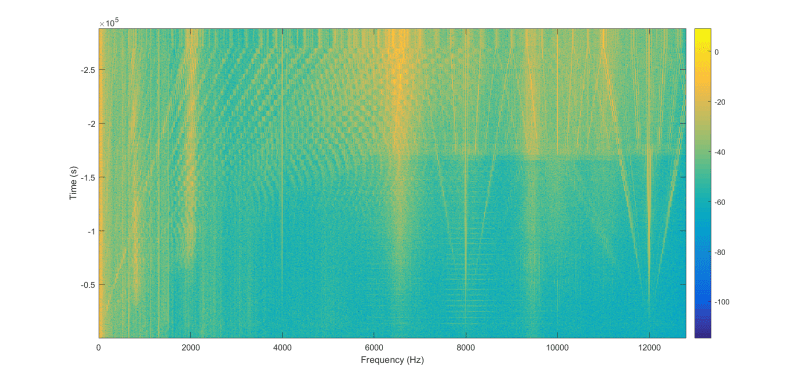In gathering data to characterize noise and vibration in electric motors, I'm having trouble understanding some spectrogram features. The sharp vertical lines seem to behave very similar to pwm harmonics (see pic). They are flanked by sloped lines at multiples of twice the fundamental mechanical speed (f+-n*2*fm). This particular motor is an 18 slot / 12 pole PMSM, being driven up to 55Hz. The plot was made from acoustic pressure; the lines are apparent in accelerometer data as well.
The PWM switching frequency is 16kHz.
These lines are quite sharp and occur across the full operating range of the motor at multiples of ~4kHz.
Could these be pwm related?
Any other ideas as to what would produce these vibrations? An artifact of the DAS?

The PWM switching frequency is 16kHz.
These lines are quite sharp and occur across the full operating range of the motor at multiples of ~4kHz.
Could these be pwm related?
Any other ideas as to what would produce these vibrations? An artifact of the DAS?

